Soil is a dynamic, three-dimensional living system that serves as both a habitat for soil microorganisms, flora and fauna and a medium for recycling nutrients and water. It is the foundation of global food security. Soil supports plant and animal production, and sustains agricultural as well as natural ecosystems, both above and below the ground
The texture of soil depends on inherent land conditions, but soil structure that builds on these baseline conditions can be influenced by disturbances associated with land management practices. This includes growing a wide variety of plants and applying of soil amendments such as fertilisers, lime, gypsum, herbicides, pesticides and biological supplements. The quality of the structure of soil is also influenced by grazing practices, and by erosion caused by wind and water. Soil structure varies with depth down the soil profile. (Figure 1) The extent to which soil structure contributes to healthy soil conditions for sustainable agricultural production is influenced by biological and chemical as well as physical soil health characteristics.
1. The soil profile – a vertical structural system
Soil structure is not uniform throughout the soil profile. It is a continuous layered vertical architecture with distinct functions at different depths that are influenced by soil biological, chemical and physical processes. Topsoils contain loose soil or small rounded aggregates, with active pore connections that support biological activity. Subsoils contains vertical continuous pores for drainage and infiltration, primarily influenced by physical processes of shrinking, compaction and swelling. Well-structured topsoil and vertical continuous pores facilitate deep root growth that is an essential feature of drought resistance and nutrient uptake. Changes in soil structure affect temperature, water, gases, and solutes across the soil profile, and link shallow soil processes with deep ground water.
2. Fundamentals of soil structure
Soil texture is related to the proportion of primary soil particles (sand, silt and clay), which differ among soil types. It is also related to the arrangement of these primary particles into distinct combinations and patterns forming a matrix of aggregates and pore spaces. The classification of soil texture is based on various combinations of clay, silt and sand. Both texture and arrangement of particles determine the pathways for water movement in soil, root development, aeration and activities of soil organisms. Soil aggregates are clusters of various combinations of clay, silt, sand, organic matter, roots and microbes. Healthy soil structure is characterised by stable aggregates with pore structures that enable good water infiltration, nutrient cycling, and resilience to environmental stress.
While the characteristics of healthy structure varies across soil types, the underlying principles remains the same. In sandy soils, structure depends strongly on organic matter to improve cohesion and moisture retention. In soils with more clay, good structure enhances drainage and does not have high levels of compaction. Loamy soils typically have a balanced structure but still require careful management to preserve their integrity.
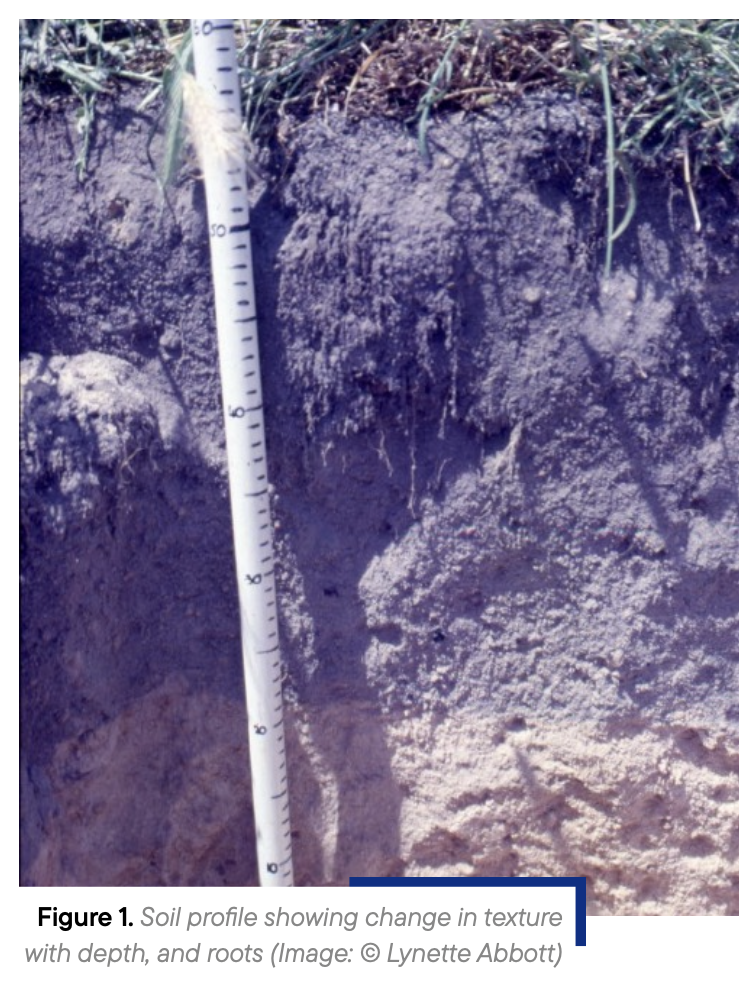

Soil aggregation results from specific arrangement and cementation of primary soil particles into microaggregates (<250 μm in size) (Figure 2). This arrangement depends on the soil surface area, chemical properties, fragments of organic matter, activities of soil organisms, root growth, and environmental conditions that further influence organic matter, soil fauna and microbial activity and soil water (Greenland et al. 1962; Tisdall and Oades 1979). Microaggregates combine to form macroaggregates (250 – 2000 mm) that are stabilized by root hairs and fungal hyphae (Degens 1997). The stability of aggregates depends on the strength of contact between soil particles, pore connectivity, moisture dynamics, and the cohesion of particles facilitated by interactions between organic matter and soil organisms, networks of fungal hyphae and fine roots. (Figure 3) In addition to root hairs, roots with very small diameters entwine soil particles in combination with fragments of organic matter to strengthen the stability of macroaggregates (Figure 4).
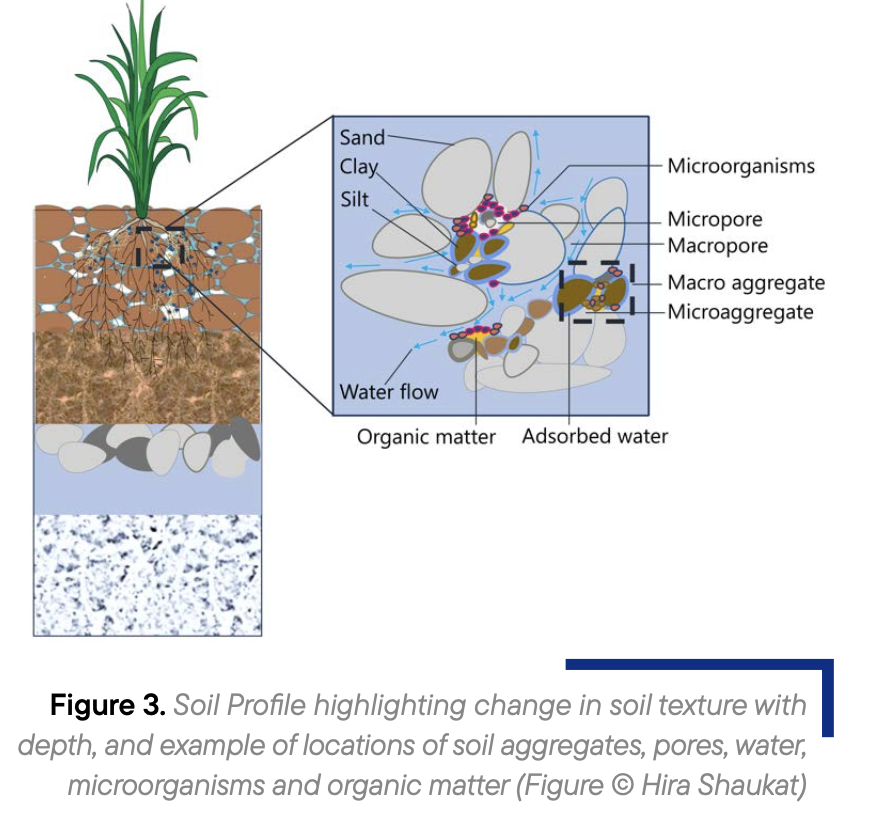
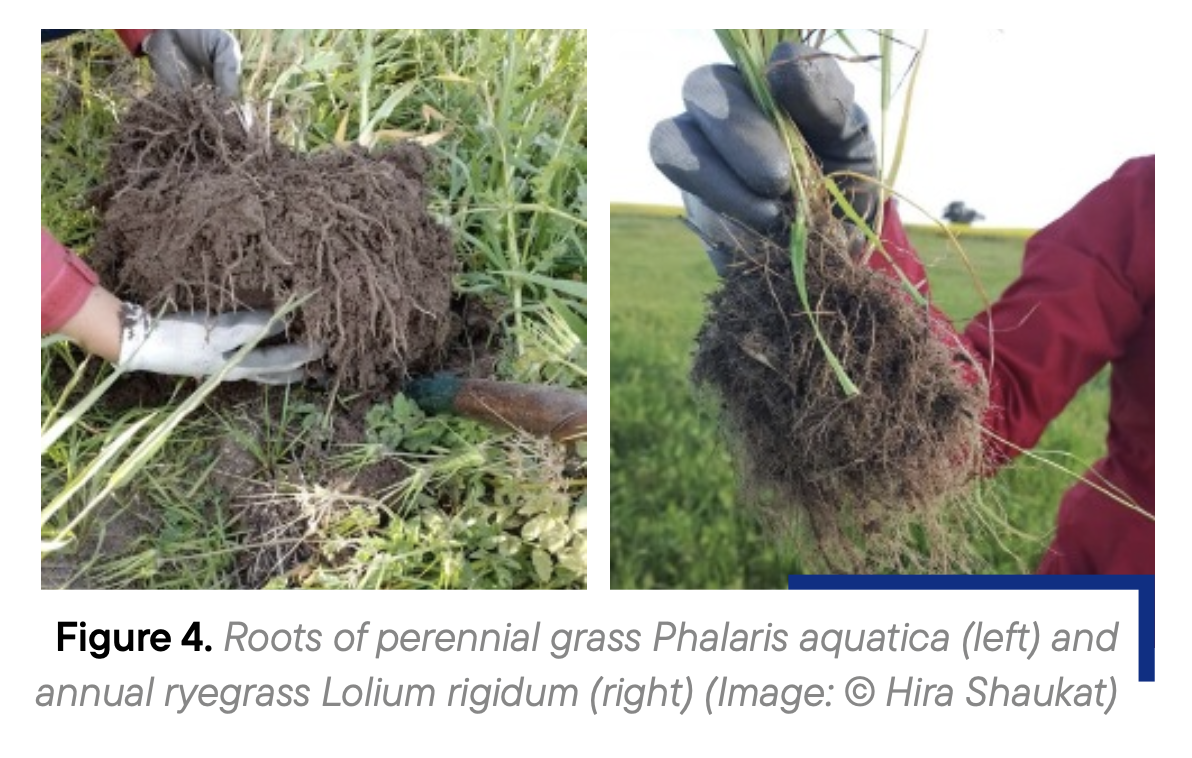
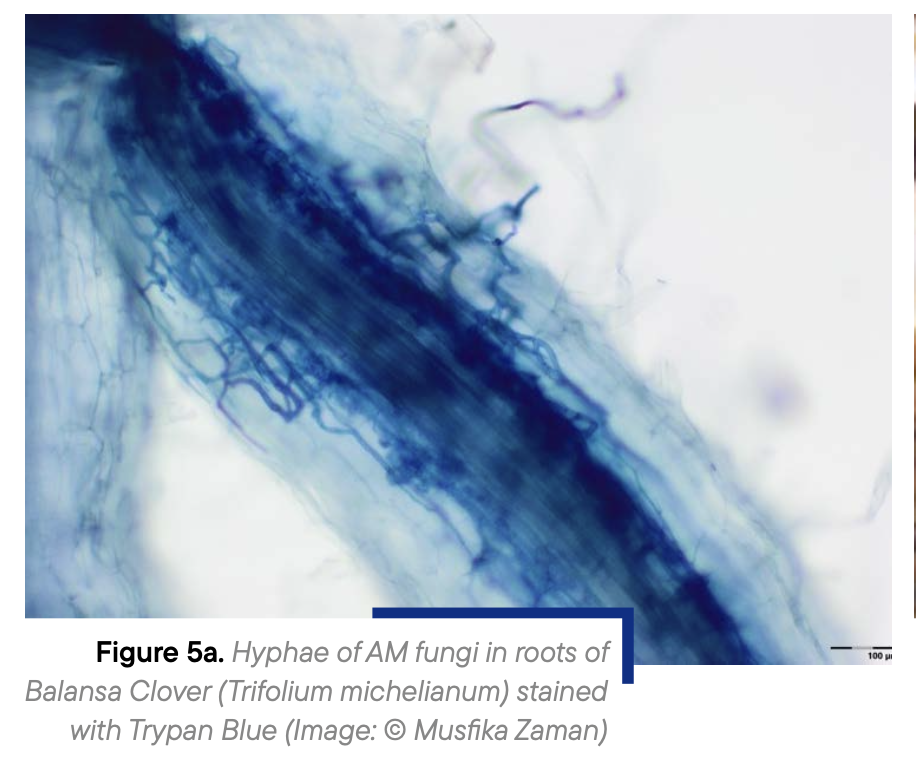
Soil biodiversity plays a central role in stabilising aggregates. During the degradation of organic matter in soil, some bacteria and fungi produce polysaccharide molecules that help bind small soil particles and fragments of organic matter together enabling the aggregates to resist disintegration. Fungal hyphae, including those formed by arbuscular mycorrhizal fungi (Figure 5) in soil around roots, can strengthen the cohesion of soil particles into stable aggregates by binding and stabilising processes (Tisdall and Oades 1979).
Earthworms play an important role in soil aggregation by ingesting fragments of organic matter and soil particles and depositing them as casts inside their tunnels or on the soil surface, according to the kind of earthworms involved. (Figure 6) Earthworm casts improve soil structure by re-introducing transformed components of soil organic matter combined with fine soil particles into the soil. These re-cycling and re-distribution processes further improve soil conditions which includes enhancing activities of other soil organisms that stimulate soil building processes (Rodríguez et al. 2025).
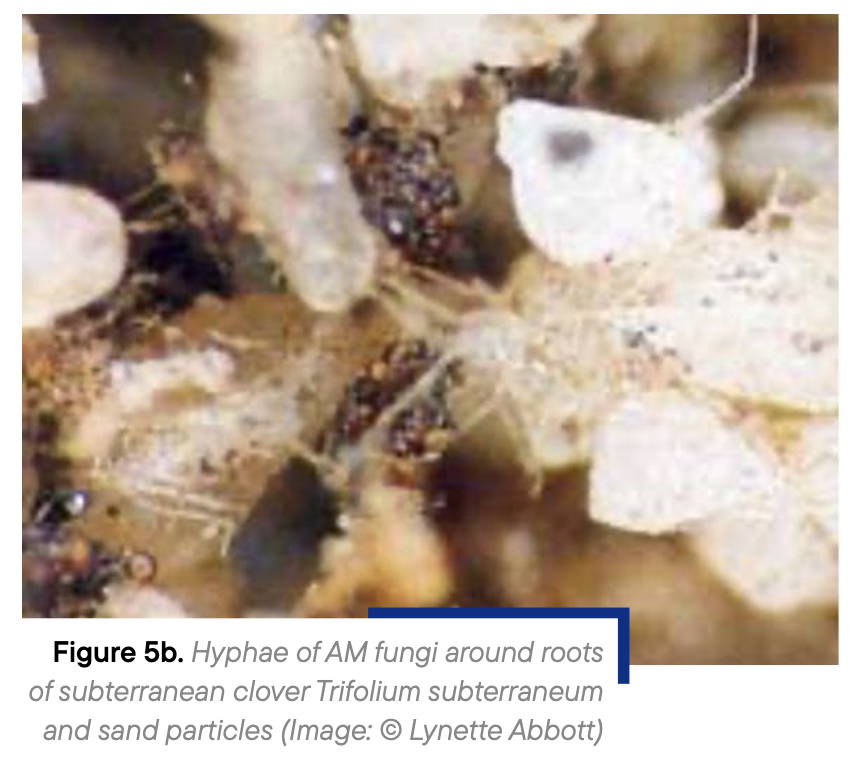
Soil porosity refers to the proportion of pore space in the soil matrix. It controls water retention, air exchange, nutrient movement and the microbial habitat. Soil pores exist at multiple hierarchical levels, influencing the environment of soil organisms and soil organic carbon use and storage. Increases in micro-aggregation enhance soil microporosity and microbial activity. Soil aggregation plays a central role in soil stability, nutrient cycling, water dynamics and carbon sequestration (Six et al. 2004). Roots and soil fauna (e.g. microarthropods, earthworms, ants, termites) are ecosystem engineers which enhance macropore formation. These activities improve infiltration of water which moistens and drains the soil profile and enables oxygen to aerate the soil and provide a suitable environment for microbial activity.
3. Soil carbon and structural stability
Soil carbon is not only a building block of soil structure but it is also a functional proxy for structural dynamics, microbial interactions and nutrient turnover in soil. Carbon exudates from roots, organic matter fragments and soil microbial biomass combine to bind mineral particles and foster the formation of aggregates. Physical protection of organic matter inside the matrix of aggregates limits its decomposition and enhances long-term aggregates and carbon stability. Soil carbon regulates pore connectivity, affecting flow of oxygen, water and nutrients that are critical for microbial growth and respiration, further highlighting the role of carbon as both as a driver and consequence of soil structural processes. Management practices such as tillage, planting of diverse species of pastures or crops, and reforestation all modify soil organic matter inputs, changing the rate of formation of aggregates and impacting water movement through the soil profile, and contribute to soil structural stability.
4. Measuring and assessing soil structure
Field-based assessment techniques such as visual soil structure assessment provide rapid, low-cost evaluations of soil structure. These methods typically involve manual examination of soil aggregates using simple tools like spades, knives, and scoring cards to judge aggregate size, shape, and porosity, as well as the ease of root penetration.
Quantitative soil structure assessment include use of a suite of standardized physical tests to measure key structural properties. Tests that measure bulk density and porosity provide information about compaction and pore space, while aggregate stability tests evaluate resistance to disintegration when wetted. Water infiltration tests, such as those using double-ring infiltrometers, estimate the rate at which water enters soil and reflect macro- and mesopore continuity. Penetrometer resistance is another measurement; indicating the mechanical resistance roots face as they move through the soil profile. Additional tests for shear and tensile strength offer insights into structural resilience and vulnerability to erosion or compaction of soil.
Advanced techniques are transforming soil analysis by providing precise, non-invasive insights into composition and structure. Spectroscopy, especially using mid infrared (MIR) and near infrared (NIR) spectra, allows rapid assessment of soil carbon, nitrogen, and minerals, with drones and satellites extending spatial coverage. For subsurface mapping, ground penetrating radar (GPR) and electromagnetic induction (EMI) sensors detect moisture variation and structural changes to deeper layers. Field scale soil information can be complemented with laboratory methods such as X-ray diffraction (XRD), scanning electron microscopy (SEM), thermal analysis and Fourier- transform infrared spectroscopy (FTIR). These approaches can enhance soil diagnostics and support informed land management.
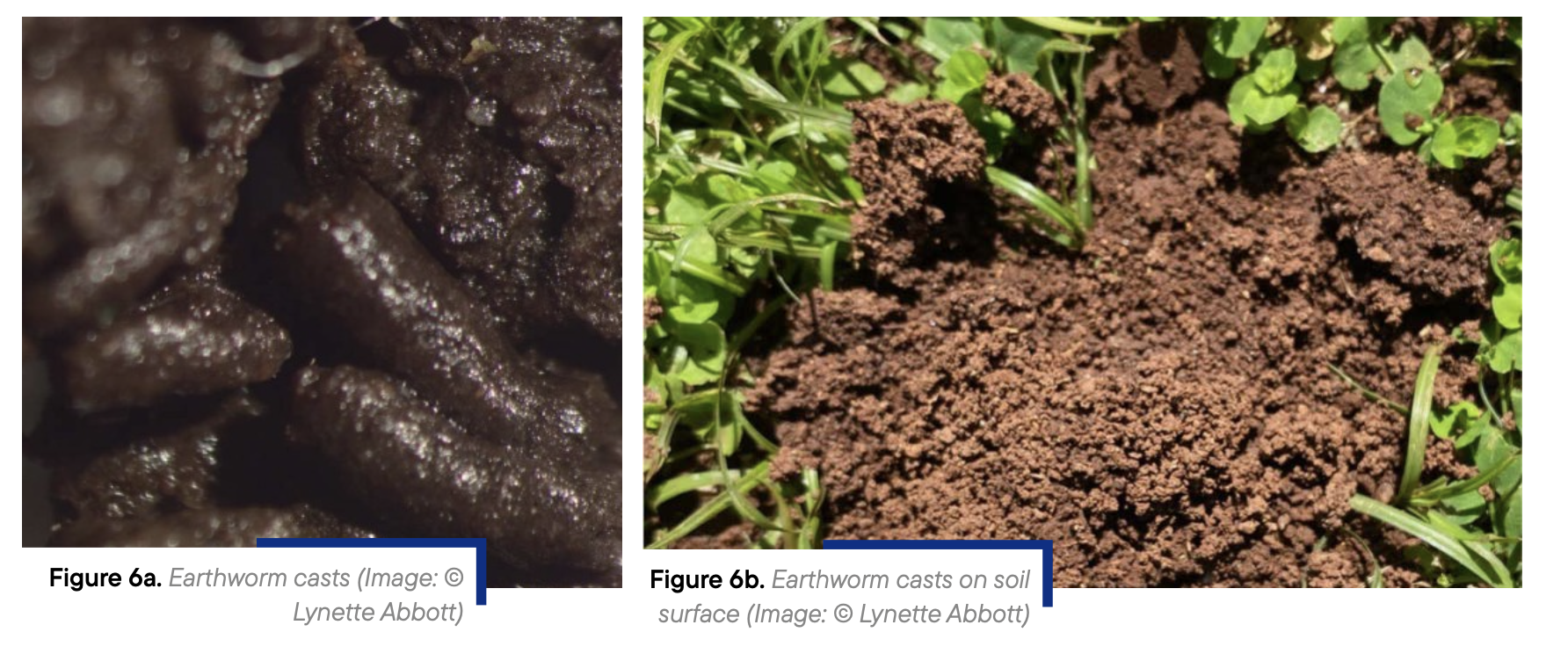
5. When structure fails: identifying soil constraints
Soil structural constraints can increase under the conventional agricultural practices that rely on intense soil disturbance including deep tillage, and continuous monocropping. Different constraints emerge at various functional points with depth down the soil profile. Identifying and managing soil constraints is important for maintaining soil and plant health and for ensuring production systems incorporate strategies that prevent structural failure.
Constraints in the topsoil include soil erosion which is indicated by exposed roots, gullies and downstream sediment accumulation downstream. This is mainly caused by wind and water erosion when the nutrient rich topsoil is removed. It reduces soil fertility, disrupts soil communities, affects waterways and lowers agricultural productivity. Soil compaction occurs when soil particles are compressed, disrupting soil pores. Compacted soil leads to unnecessary water runoff, resistance to root establishment and stunted plant growth. Soil dispersion occurs when soil aggregates disintegrate under the impact of rain, leaving a thin crust on the soil surface when the soil dries. This condition creates a physical barrier and reduces water infiltration, leading to poor seedling emergence. All these topsoil constraints can occur in response to inadequate ground cover, over-grazing, excessive tillage, use of heavy machinery traffic and land clearing.
Constraints in the subsoil include formation of hard pans. Some subsoil constraints occur naturally, such as the formation of clay pans, but such structural constraints can also emerge in sandy duplex soils (sand over clay) in dryland areas due to long-term tillage to a constant depth or by growing crops that have the same root growth patterns. Amelioration strategies for subsoil constraints include deep ripping, subsoil manuring, and incorporating organic amendments into the soil to improve structure and fertility.
6. Building better structure in agricultural landscape – management practices
The diversity of soil structural responses across soil types, land uses and regions need effective soil management practices according to the specific soil profile and constraints. This requires an alignment of the principles soil health with appropriate land management practices. Biological management practices focus on fostering the natural processes that build and maintain soil structure. Examples of these practices include maintaining complex living root systems by growing perennial plants or mixtures of plant species with contrasting root architectures, use of cover cropping, and stubble retention that supports integrity of soil porosity, fungal hyphal networks and stability of soil aggregates.
Mechanical interventions need to be applied strategically to improve soil structure. This includes use of shallow or minimum tillage to reduce negative impacts on subsoil structure, and controlling wheel tracks to reduce compaction by restricting machinery movement to specific lanes. Precision soil management that uses satellite maps and soil scanners can identify subsoil constraints across scales so that disturbance and resource use can be optimised. Soil chemical interventions can also be used to protect and improve soil structure. This includes application of calcium as gypsum to reduce dispersion and crusting in irrigated and sodic soils, and for reducing aluminium toxicity in acidic soils. Calcium can be used as a replacement ion for chemically constrained soils to prevent structural breakdown and enhance water infiltration capacity in salinity-prone areas.
7. The frontier: integrating structural knowledge and decision support
Advanced technologies enable examination of soil structure from molecular to landscape scales, allowing detailed profiling of soil constraints and moisture dynamics. Research has illuminated structure-function relationships about how soil architecture influences root growth, microbial habitat, gas exchange, and water retention. Understanding these processes is critical for quantifying how management practices affect nutrient cycling and agricultural productivity.
Integrating structural features into soil models (e.g. HYDRUS) and farm-scale models (e.g. APSIM) can incorporate dynamic structural impacts on water movement, carbon turnover, and yield predictions. Bridging mechanistic understanding with digital decision tools holds transformative potential for precision agriculture, policy planning, and adaptive management.
Why is soil structure the foundation of healthy soils?
Soil structure is highly dynamic, evolving over decadal time scales in response to climate shifts and land-use changes. Biotic agents such as fine roots, hyphae of mycorrhizal fungi, and microbial communities, reshape pore networks through pore formation, clogging, and deposition of decaying microbial biomass.
These biological processes act as a feedback, modulating vegetation responses to environmental change. Structural dynamics directly influence water, gas, and nutrient fluxes, with aggregate stability and soil organic carbon (SOC) co-regulating porosity and carbon retention. However, current models lack mechanisms for stimulating such feedback, calling for integration of aggregate turnover and pore evolution for improved soil system predictions.


